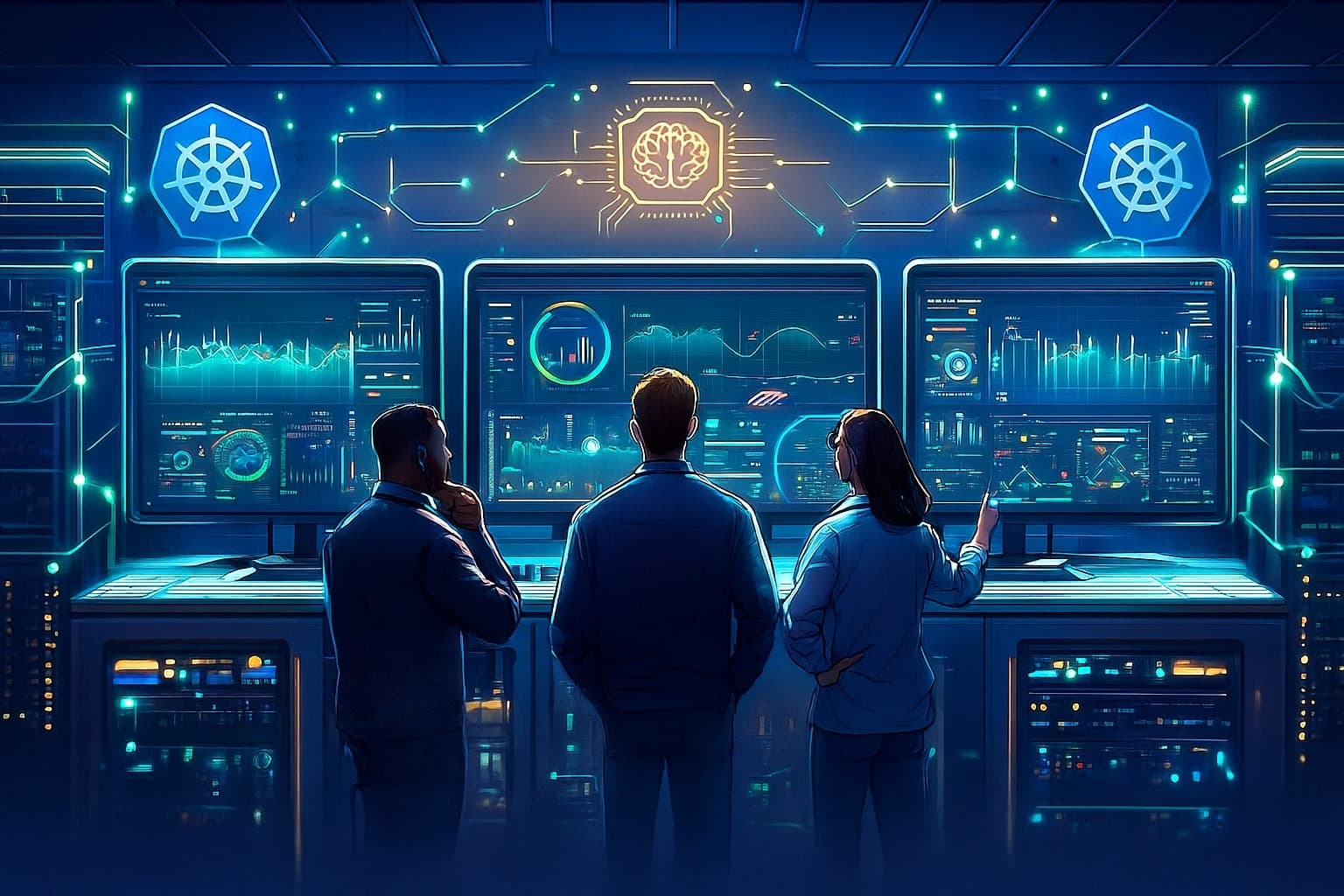Randolph Chung, CTO, MantisGrid AI
John Belamaric, Co-Chair of Kubernetes SIG Architecture and DM WG
Kubernetes was initially conceived with principles fundamentally aligned with web applications and microservices — a design philosophy often summarized as treating infrastructure like "cattle, not pets." This stateless-first approach, emphasizing horizontal scaling and rapid redeployment, proved transformative for traditional cloud-native applications.
But the game has changed.
The rise of AI is pushing the boundaries of what Kubernetes infrastructure must support. These workloads introduce novel and stringent demands, particularly around hardware resource dependencies, memory/topology affinity, cost-efficiency, and performance predictability. To illustrate, imagine a massive web application handling millions of requests: if a single stateless microservice container restarts, the users won’t even notice. Now, picture an AI team running a multi-billion parameter model training job on a cluster of specialized, high-end accelerators. If one component falters, the entire multi-day, expensive training collapses. This is the new reality AI-labs and every enterprise must confront.
Dynamic Resource Allocation: A Step Forward
In recognition of these evolving demands, Kubernetes recently shipped the Dynamic Resource Allocation (DRA) feature in version 1.34. DRA is a significant architectural enhancement designed to address the challenges of expressing complex hardware requirements that go beyond simple CPU/memory requests. This effort is a culmination of strong collaboration across the industry between hardware vendors like NVIDIA and Intel with Google and other Cloud Service Providers.
DRA solves the problem of how pods can claim access to specialized resources, like specific types of GPUs or TPUs, that are managed by external resource drivers. It introduces a decoupled lifecycle for claiming resources, allowing for more granular, scheduler-aware resource setup.
The Unsolved Challenge: Collective Reliability in Distributed ML
While DRA improves resource scheduling, it does not fully solve the fundamental challenges tied to the intrinsic characteristics of distributed AI/ML workloads. These workloads often require multiple containers and multiple GPUs to work together synchronously for a single training step or complex inference operation.
This tight coupling creates a brittle, high-stakes reliability profile:
- Single Point of Failure: If even one pod, one container, or one GPU within a collective job fails, whether due to a transient hardware issue, a minor software glitch, or a networking blip, the entire step of the training or inferencing process fails.
- Catastrophic Cost of Failure: The job must typically restart from the last checkpoint. Given that training runs can span days or weeks and utilize vast amounts of expensive compute time, this recovery process is exceedingly costly, both in terms of time-to-market and financial expenditure. Imagine losing a week of $50,000-per-day compute time because a single GPU failed! Balancing the cost of frequent checkpoints with the costs of reprocessing after failures is a constant struggle.
Beyond Observability: The Need for Predictive Reliability
This is where existing market solutions, which primarily focus on observability and postmortem analysis, fall short. Knowing why a multi-day training run failed after the fact does little to recover the lost compute cycles or prevent the financial hit.
What AI/ML workloads truly require is a sophisticated reliability solution that moves beyond reactive monitoring. This solution must be capable of:
- Predictive Detection: Identifying subtle precursors to failure—such as drifting hardware temperatures, impending driver issues, latency spikes, or early-stage memory exhaustion—before they cascade into a full system failure.
- Proactive Mitigation: Taking automated, surgical action to address the detected issue. This could involve dynamically shifting a workload to a healthier node, initiating a rolling restart of a dependent service, or throttling a component, all without failing the entire distributed job.
Implementing this predictive, proactive reliability layer offers substantial cost benefits by minimizing expensive training restarts and maximizing the utilization of high-cost accelerator hardware.
Delivering Proactive Reliability
Addressing this reliability gap for AI/ML on Kubernetes requires key capabilities that are directly aimed at preventing outages before they happen:
- Context-Aware Telemetry: Combining multi-modal data streams including telemetry from kernel and the hardware with knowledge about the Kubernetes deployment and business context
- Predictive Fault Models: Employing machine learning to correlate multi-dimensional infrastructure signals and forecast the likelihood of a job-impacting event
- Autonomous Recovery: Providing the mechanisms to insulate the collective job from a failing component, either by isolating the issue or non-disruptively moving the workload segment to healthy capacity.
Shifting the paradigm from reacting to failure to preventing it ensures that complex, expensive AI/ML workloads on Kubernetes achieve the consistent performance and reliability their critical nature demands.
The future of AI/ML on Kubernetes will belong to the organizations that shift from reacting to failures to preventing them—because in this new era, reliability isn’t a luxury, it’s the foundation.
